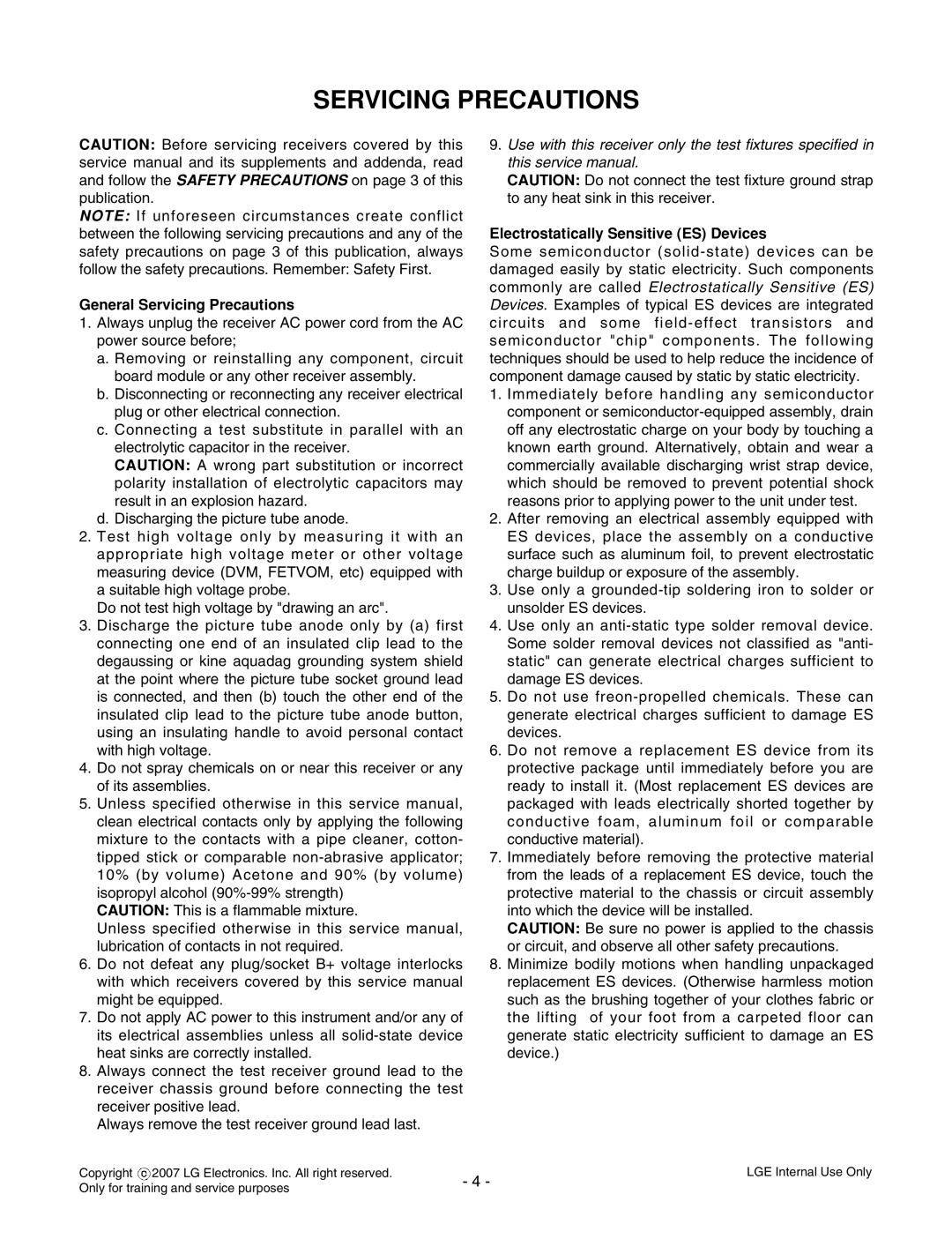L1733TR, L1933TR specifications
LG Electronics has established itself as a prominent player in the display technology market, offering a diverse range of monitors catered to various user needs. Among their notable models are the L1733TR, L1753TR, L1953T, L1953TX, and L1933TR, each designed to deliver exceptional performance, vivid visuals, and ergonomic features ideal for both casual users and professionals.The LG L1733TR and L1753TR models are 17-inch and 17-inch widescreen monitors respectively, boasting a resolution of 1280x1024 pixels. These monitors utilize a TFT LCD panel technology that results in outstanding clarity and color accuracy. With a quick response time, they are well-suited for gaming and video playback, reducing motion blur and ensuring a smooth viewing experience. The aspect ratio of 5:4 for L1733TR and 16:10 for L1753TR further enhances compatibility with a variety of applications, particularly those requiring precise graphics.
The L1953T and L1953TX models represent LG’s commitment to larger display solutions, featuring a 19-inch screen size. With a resolution of 1280x1024 pixels, these monitors deliver sharp images and vibrant colors, making them ideal for graphic design and multimedia tasks. The L1953TX variant includes an added feature of built-in speakers, allowing for an all-in-one multimedia experience without the need for external audio devices.
The L1933TR, another commendable entry in LG's lineup, exhibits a sleek design with a slim profile and narrow bezels, making it a contemporary choice for users keen on aesthetics. This 19-inch monitor uses advanced backlight technology to provide better energy efficiency and reduced power consumption compared to traditional LCDs. With a wide viewing angle, the L1933TR ensures consistent image quality from different perspectives, allowing for collaborative work and presentations.
In terms of connectivity, all models are equipped with a variety of input options including VGA and DVI, facilitating compatibility with an array of devices such as laptops and desktops. The inclusion of various ergonomic features such as adjustable stands and VESA mount compatibility enhances user comfort, making long hours of work less taxing on the body.
Overall, LG's L1733TR, L1753TR, L1953T, L1953TX, and L1933TR monitors exemplify the company’s dedication to providing innovative display solutions that combine cutting-edge technology with user-friendly features, catering to the diverse requirements of modern users.
